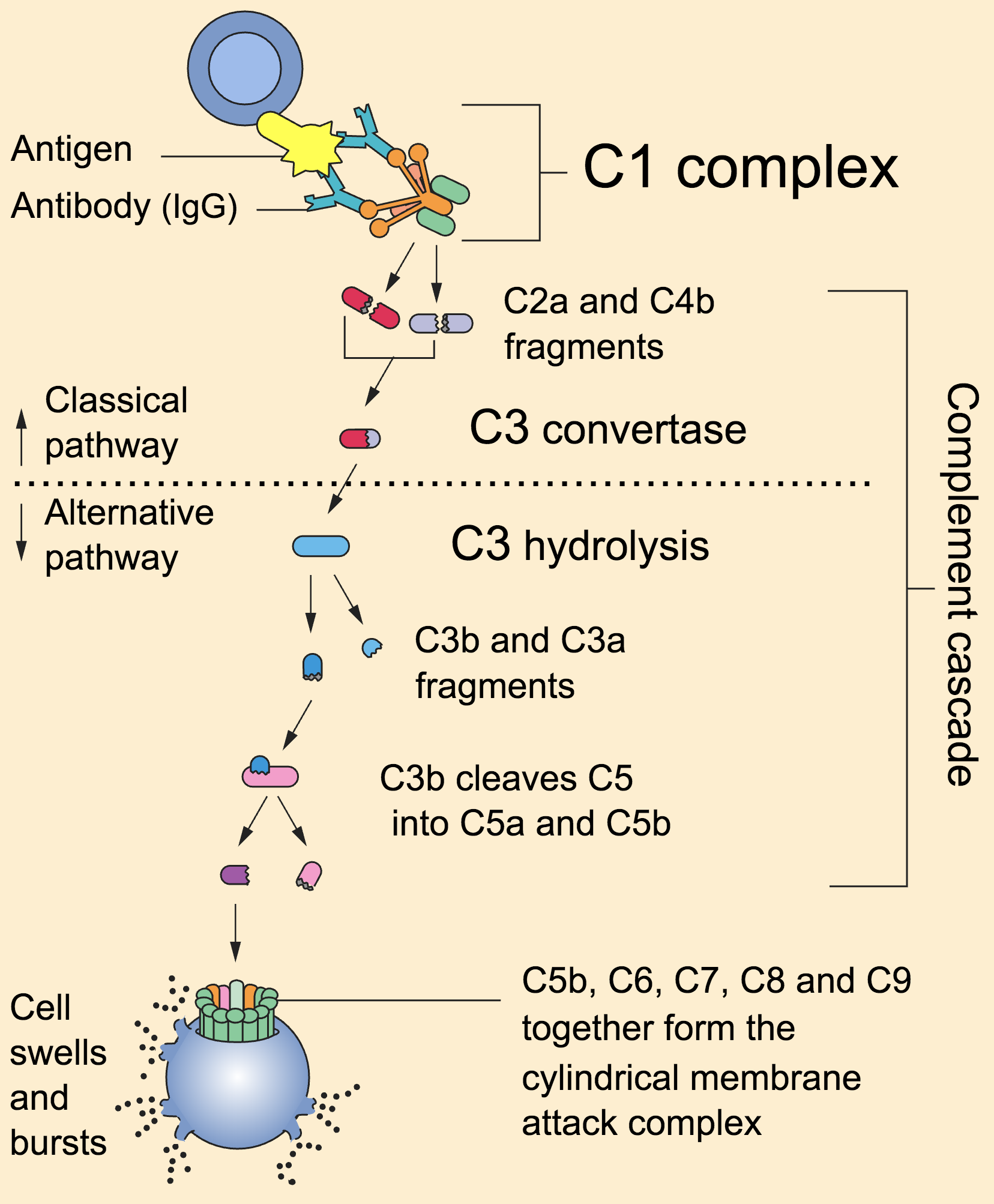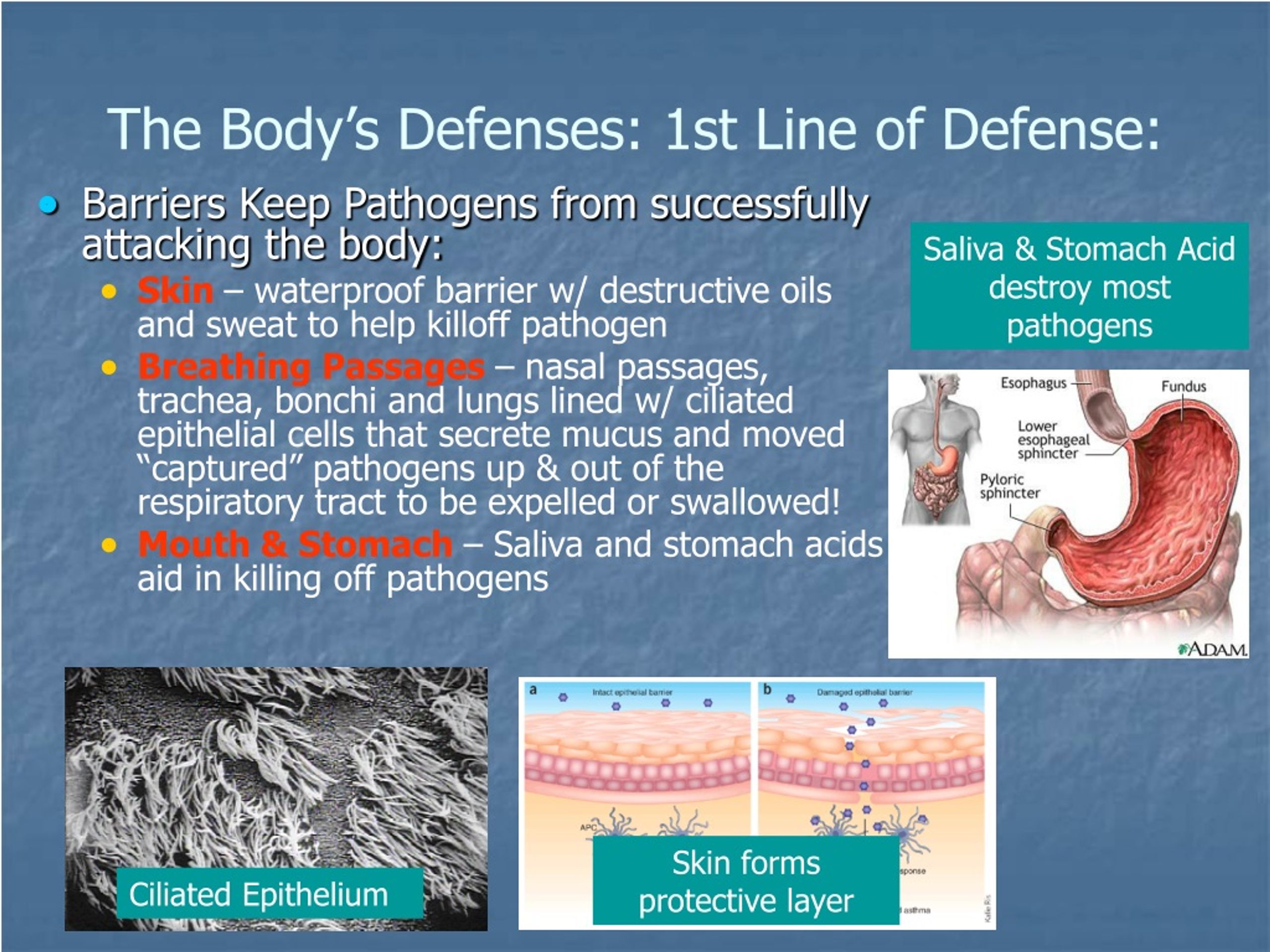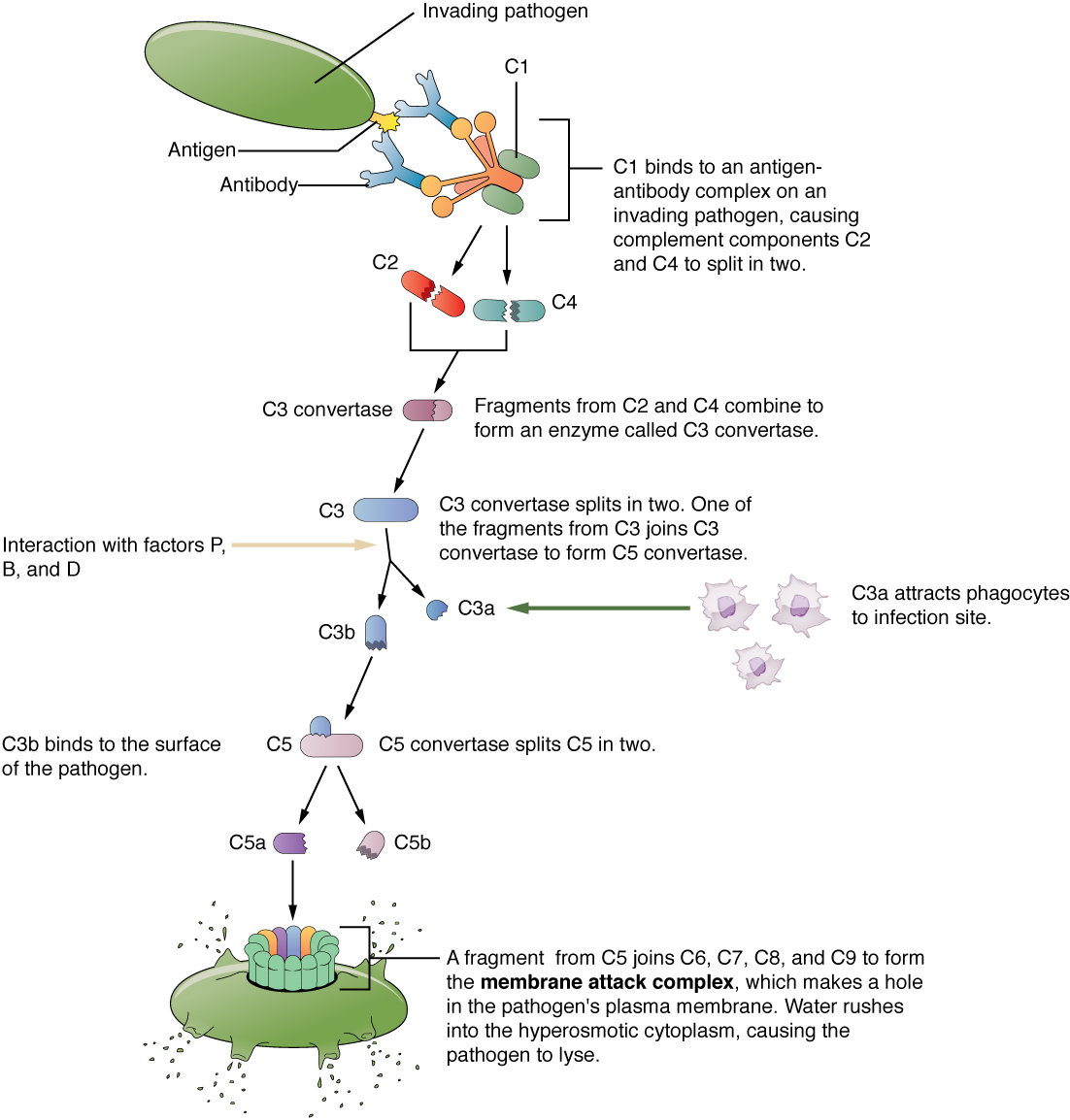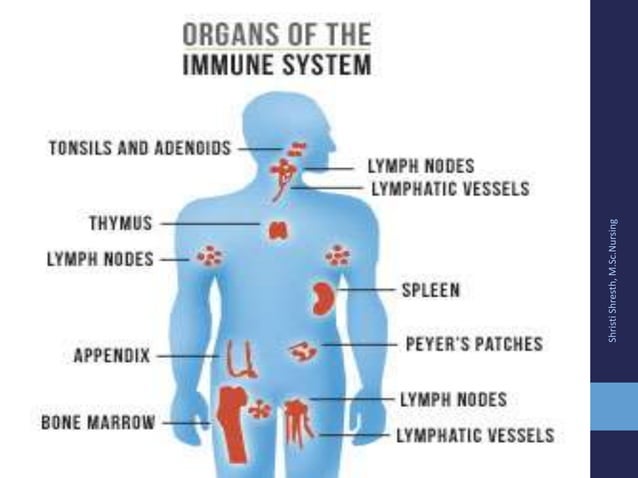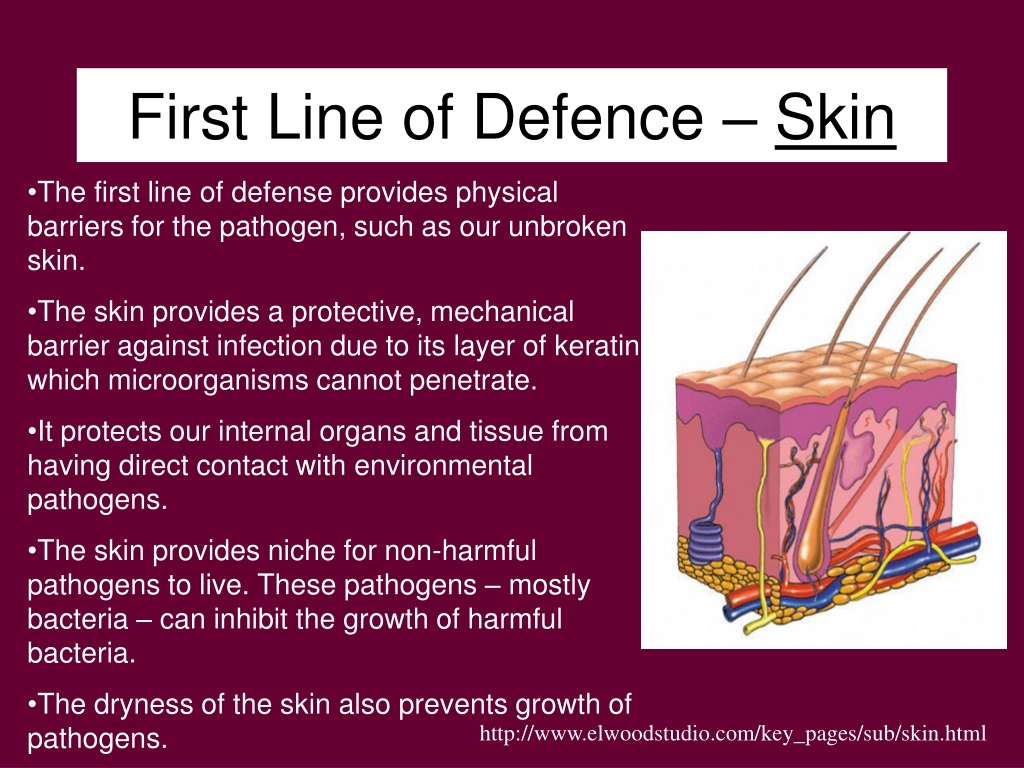Which Is The First Step In The Body's Defense Cascade

Imagine a microscopic world, a bustling city teeming with activity, where tiny guardians stand ever vigilant. A silent alarm blares as a foreign invader breaches the city walls. It’s a moment of crisis, a call to arms, and the body's incredible defense system springs into action, but what triggers this intricate cascade?
The first and perhaps most crucial step in the body's defense cascade is the recognition of a threat. This recognition is primarily achieved through innate immune cells, which are always on the lookout for danger signals or foreign invaders, such as bacteria, viruses, or damaged cells.
The Innate Immune System: The Body's First Responders
The innate immune system is our body’s rapid-response team. It's a pre-programmed defense system that's always ready to fight off common threats. This system is non-specific, meaning it doesn't target specific invaders but rather responds to general patterns associated with danger.
Pattern Recognition Receptors (PRRs)
At the heart of the innate immune response are Pattern Recognition Receptors (PRRs). These receptors are like sentries, constantly scanning for molecules that are commonly found on pathogens (disease-causing organisms) or released by damaged cells.
These molecules are known as Pathogen-Associated Molecular Patterns (PAMPs) and Damage-Associated Molecular Patterns (DAMPs). PAMPs are like the uniform of the enemy – specific markers that identify them as foreign. DAMPs are the signals sent out by our own cells when they are injured or stressed.
Examples of PRRs include Toll-like receptors (TLRs), NOD-like receptors (NLRs), and RIG-I-like receptors (RLRs). These receptors are located on various immune cells, such as macrophages, dendritic cells, and neutrophils, allowing them to detect threats in different parts of the body.
When a PRR binds to a PAMP or DAMP, it triggers a signaling cascade within the immune cell. This cascade activates the cell and initiates the inflammatory response.
Inflammation: A Double-Edged Sword
Inflammation is a critical component of the immune response, characterized by redness, swelling, heat, and pain. It's the body's way of isolating the infected area, recruiting immune cells, and promoting tissue repair.
The inflammatory response is initiated by the release of cytokines and chemokines. These are signaling molecules that act like messengers, attracting other immune cells to the site of infection and activating various defense mechanisms.
For instance, cytokines like interleukin-1 (IL-1) and tumor necrosis factor-alpha (TNF-α) promote inflammation and activate other immune cells. Chemokines, such as CXCL8, attract neutrophils to the site of infection.
While inflammation is essential for fighting off infection, it can also be damaging if it becomes excessive or chronic. Uncontrolled inflammation can contribute to various diseases, such as arthritis, heart disease, and autoimmune disorders.
Beyond Recognition: The Adaptive Immune Response
While the innate immune system provides the initial defense, the adaptive immune system provides a more targeted and long-lasting protection. The adaptive immune response is slower to develop, but it can recognize and remember specific pathogens.
The adaptive immune system involves T cells and B cells, which are specialized lymphocytes. These cells recognize specific antigens (molecules that trigger an immune response) on pathogens and mount a targeted attack.
T cells can directly kill infected cells or help B cells produce antibodies. B cells produce antibodies, which are proteins that bind to antigens and neutralize pathogens or mark them for destruction.
The adaptive immune response is also responsible for immunological memory. After encountering a pathogen, some T cells and B cells become memory cells, which can quickly respond if the body encounters the same pathogen again in the future. This is the basis of vaccination.
The Interplay Between Innate and Adaptive Immunity
The innate and adaptive immune systems work together to provide comprehensive protection against pathogens. The innate immune system initiates the immune response and activates the adaptive immune system.
For example, dendritic cells, which are part of the innate immune system, capture antigens from pathogens and present them to T cells, initiating the adaptive immune response. Cytokines released by innate immune cells can also influence the development of the adaptive immune response.
The interplay between these two systems ensures that the body can mount an appropriate and effective immune response to a wide range of threats.
Real-World Implications
Understanding the first steps in the body's defense cascade has profound implications for human health. It can inform the development of new vaccines, therapies for infectious diseases, and treatments for autoimmune disorders.
For instance, researchers are exploring ways to enhance the innate immune response to fight off infections more effectively. They are also developing therapies that target specific cytokines or chemokines to control inflammation in autoimmune diseases.
Moreover, understanding how PRRs recognize PAMPs and DAMPs can help us develop new diagnostic tools for detecting infections and inflammatory conditions.
According to the National Institutes of Health (NIH), research into the immune system is crucial for addressing some of the most pressing health challenges of our time, including infectious diseases, cancer, and autoimmune disorders.
The World Health Organization (WHO) emphasizes the importance of strengthening global health security by understanding and addressing emerging infectious disease threats.
Studying the initial steps of the immune response is also critical for addressing the challenges of antimicrobial resistance. As bacteria and viruses become increasingly resistant to antibiotics and antiviral drugs, we need to develop new strategies to fight off infections. Understanding how the innate immune system recognizes and responds to pathogens can provide insights into these strategies.
Looking Ahead
The journey into understanding the body’s defense mechanisms is a continuous one. New discoveries are constantly being made, revealing the intricate details of how our immune system works.
As we delve deeper, we gain not only scientific knowledge but also a profound appreciation for the resilience and complexity of the human body. The ability to recognize a threat is the cornerstone of our health, the first vital step in a cascade of defense that protects us from the unseen world of pathogens. It’s a reminder of the incredible power we possess within us, a constant battle being waged to keep us safe and healthy.
So, the next time you feel a tickle in your throat or a slight fever, remember the microscopic battles being fought within you, the vigilant sentries recognizing danger and initiating the cascade of defense. It’s a remarkable process, a testament to the body's ability to protect itself, a silent symphony of immunity orchestrated by the recognition of a threat.





